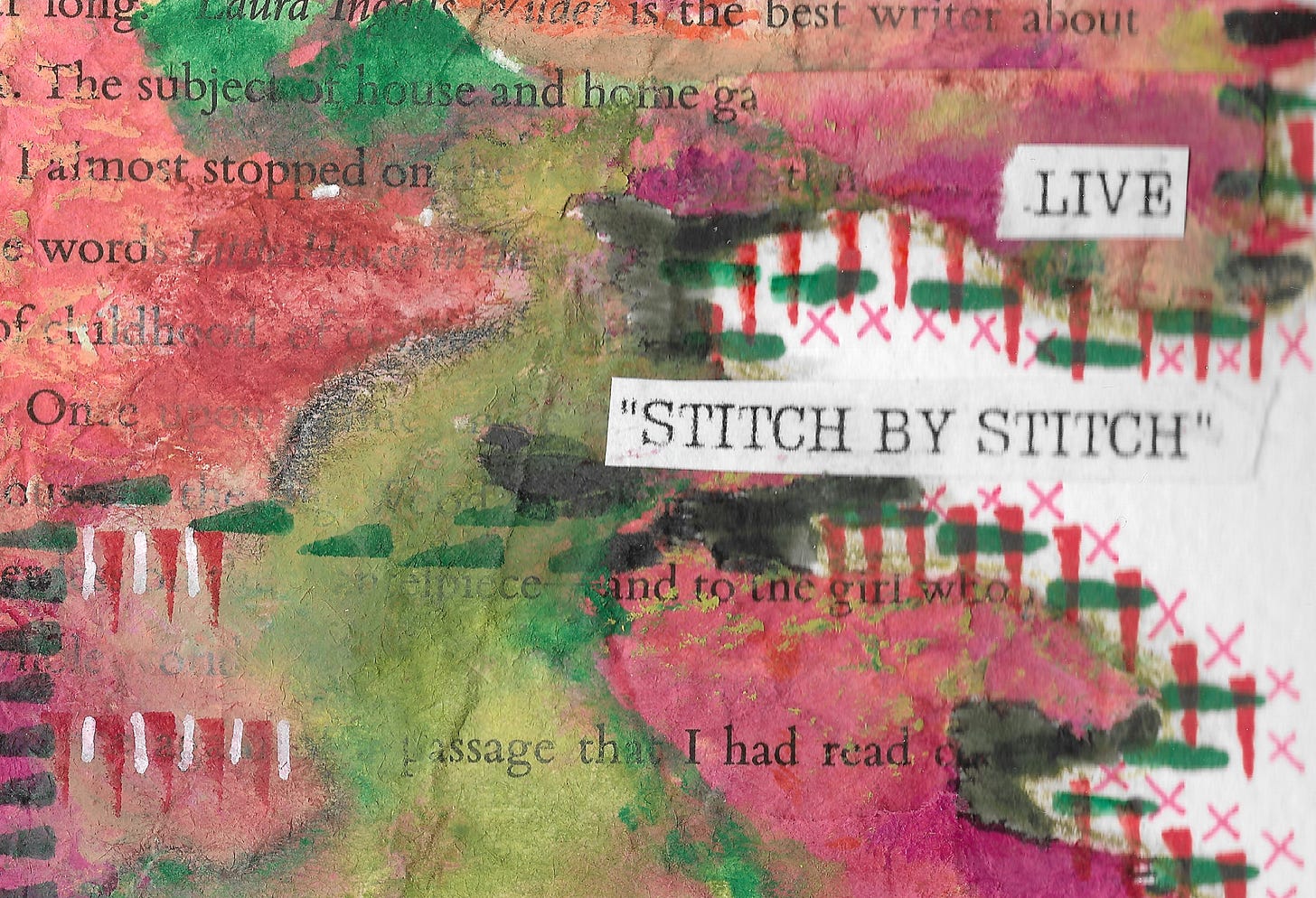This is Debs from Take a Moodle with Me. I write about moodling (yes, it’s a thing!) and finding small pockets of time in your everyday life to connect or reconnect with yourself.
This morning, I felt an intense urge to journal as soon as I woke up. I must admit, that I don’t do this as much as I used to when I wrote Julia Cameron’s Morning Pages for three years. But I still find it a comfort when I need to clear my head of percolating thoughts.
I listened to that urge and allowed my mind to take a journaling moodle on a fresh, clean page. There was obviously something that needed to come out after a sleep!
Often, epiphanies come to me when I let my thoughts moodle on the page. One came to me today, that filled my entire being with a fizzy excitement.
Without this space and this practice, I would seldom make the connections and come up with the ideas that I have. I would not have had this epiphany today if I’d ignored that urge to write.
I like to think of moments like this as living "stitch by stitch", a term used by Anne Lamott.
We live stitch by stitch, when we’re lucky. If you fixate on the big picture, the whole shebang, the overview, you miss the stitching. [Anne Lamott in Stitches: A Handbook on Meaning, Hope and Repair]
When I was younger, the big picture was everything: always planning for the future, living in the future and looking for the next big thing. Now, after many years of debilitating unhappiness, I try my best to pay attention to the stitches that make up the tapestry of my life. In listening to nudges, and in exercising my choices, I select the threads that add colour and vibrancy to my life.
Those threads create connections - so many connections.
Those threads are sometimes epiphanies; sometimes just small ideas.
Sometimes they are a meaningful conversation with another like-minded soul.
And gradually, a life is sewn together.
The card art
This story is inspired by card 21 from the pack of 50. Sorry, the image is a bit blurry!
This is a collage of pre-inked old book papers, finished with stitch-like mark-making around the edges. Remember, I made the cards before I wrote out and added words, so this was the perfect choice for these words when I was matching words and images. You can read more about this in the post below. Red and green is an unusual colour palette for me (it reminds me too much of Christmas!), but on the occasions when I do use it, I like it. How is that for contrary?
The magic of matching words to the art
I haven't yet told you how the words and the art came together for this set of cards! So here you go. I didn't create the cards with words in mind. The "art" came first. Happy messing about with 50 small pieces of card. I typed up phrases and words, that have been meaningful to the way I live my life and printed them out.
So, dear moodlers, that is the end of this piece of writing for today. As always, I’d love to hear your thoughts on anything that resonated with you. Or what you think of the little art cards. Or, just leave me a comment to say “hi”.
Until our next moodle together, take care
Where does the word moodle come from?
The etymology of the word "moodle" is unclear, but it was used in the early 20th century to essentially mean dawdling and frittering away time while letting your mind wander and chew on thoughts in a relaxed way. In Brenda Ueland's formulation (“If You Want to Write”), it essentially means daydreaming with a pencil in your hand - you can do it on a computer, but I think it is more productive with the added quiet of pencil and paper - and not forcing yourself to write anything until you are moved to do so. [Source]
What next?
If you’re wondering what to look at next, maybe click on one (or all) of these:
Introduce yourself and your favourite way to moodle in this thread
Find a list of all the art cards I’ve written about so far
Visit my profile to see my Notes, who I subscribe to and recommend
Head to the About page to find out a bit more about the project and a little bit of backstory







What a lovely post ... and thank you for the introduction to 'moodling'